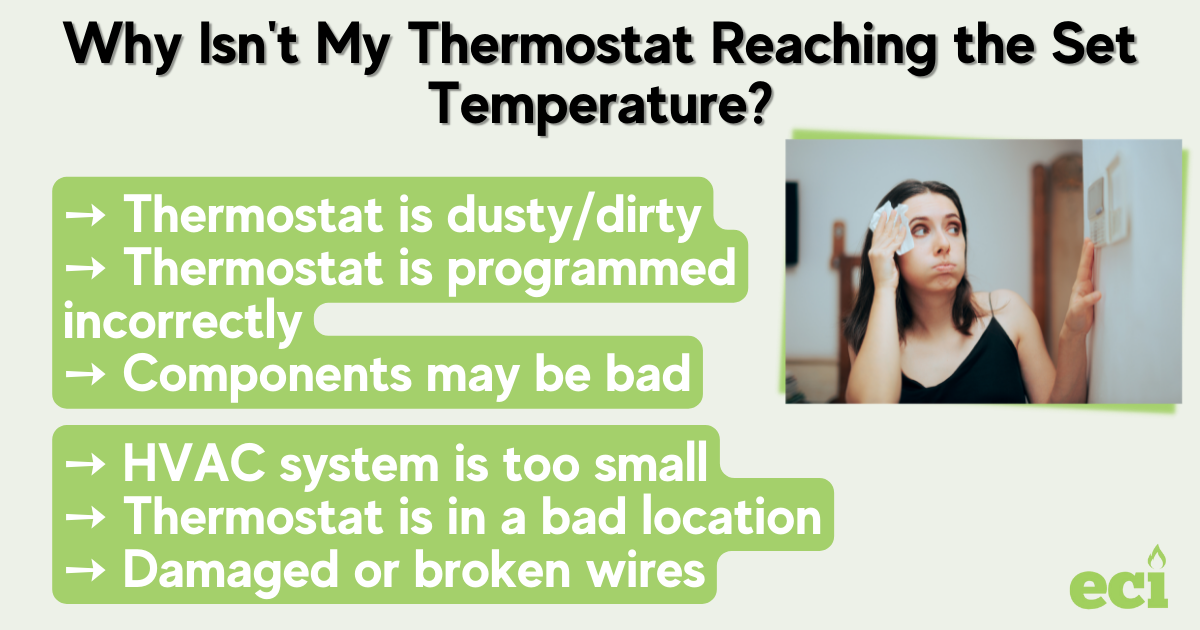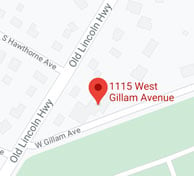Without a properly functioning thermostat, your HVAC system won't be able to keep you cool during the hot and humid summer days. If the AC is set to a comfortable temperature but you notice the number rising and your house getting warmer, you may need to look into some underlying issues.
 How Does a Thermostat Work?
How Does a Thermostat Work?
Thermostats are used to control your heating and cooling system and bring your home to the desired temperature. Put simply, digital thermostats work by sending a current through an internal component called a thermistor. This measures the resistance of the current and helps calculate the indoor temperature. The thermostat then uses the indoor air temperature to compare to the preset temperature. If there is an imbalance, the thermostat will send a signal to the unit to turn on and alter the temperature to the set one.
While this process can be explained in basic terms, there are a lot of factors that go into a working thermostat and HVAC system. Consequently, a variety of common issues can arise and prevent your thermostat from reaching the set temperature. Let's see a look at some of the common causes below.
6 Reasons Your Thermostat Isn't Reaching the Desired Temperature
1. Thermostat is in a bad location
The location of your thermostat can easily affect how it works -- or, doesn't work. It's possible that cold air is entering the area of the thermostat through a hole in the wall, attic, or crawlspace. This will affect the temperature that's being sensed and cause your thermostat to stop working before the set temperature is reached. Conversely, your thermostat may be in a spot that's hit by a lot of direct sunlight, which would also trick the sensor into displaying an incorrect reading.
For optimal function, your thermostat should be placed on an interior wall where it is less vulnerable to outside temperatures and drafts. Avoid putting it by windows, doors, exterior walls, and supply vents.

2. Thermostat is dusty/dirty
If your thermostat isn't functioning properly, it may simply need to be cleaned. Build up of dust or dirt on the sensors can interfere with readings. You should remove the thermostat cover and gently clean off any dirt. It's also smart to have a professional come out to make sure this is the issue and that the thermostat is cleaned properly if so. Keeping up with annual maintenance will ensure your thermostat stays clean and functions correctly too.

3. Thermostat is programmed incorrectly
Yes, this cause probably goes without saying. But if your programmable thermostat isn't reaching the right temperature, it may be set incorrectly. Make sure the mode, fan, and schedule settings are all set to what they should be.
4. Components aren't working properly
There are several components of your HVAC system that work together to deliver tempered air throughout your home. If any of them are bad, it will affect how the thermostat functions. The control board, for example, may not be sending the voltage to the inducer motor or blower motor. Or the inducer motor itself may be bad. You could also have a problem with the sensor(s) or the fan's relay switch.
To get a better idea of what's causing the faulty thermostat, call your local HVAC contractor. They will determine what's broken, explain how it's affecting your thermostat, then troubleshoot the issue.
5. Loose or damaged wiring
Wiring issues can result in a thermostat that doesn't turn on at all. If it does turn on, there may be display issues that lead to temperature problems. If your HVAC professional notices loose or corroded wires, it should be a simple fix. It's also possible that your thermostat was wired incorrectly when it was initially installed.
6. HVAC system is too small
A nonfunctioning thermostat could be due to your actual heater or air conditioner being too small for your home. Your HVAC unit may not be able to keep up with the demand of heating/cooling the entire home. You will need to upgrade or replace your current system to reach every area of the house.
If you live in the Delaware Valley/Greater Philadelphia area and would like to find comfort within your home, visit our website or give us a call at 215 - 245 - 3200 to learn more.




